Lab Week 12: Sorting Networks
Outline
- Simple Sorting Algorithms
- Sorting Networks
- Sorting Activity
Last Time
Sorting by Divide and Conquer
- Merge sort
- sort left half
- sort left half
- merge sorted halves
- Quicksort
- pick pivot
- split according to pivot
- left half less than pivot
- right half at least pivot
- sort left half
- sort right half
Sorting Networks
Another view of sorting in parallel
Insertion Sort, Revisited
for (int i = 1; i < data.length; ++i) {
for (int j = i; j > 0; --j) {
if (data[j-1] > data[j]) {
swap(data, j-1, j)
}
}
}
Appealing Features of Insertion Sort
for (int i = 1; i < data.length; ++i) {
for (int j = i; j > 0; --j) {
if (data[j-1] > data[j]) {
swap(data, j-1, j)
}
}
}
- Only modifications are (adjacent) swaps
- sorting is in place
- Access pattern is independent of input
- inputs always read/compared in same order
- only difference between execution is outcomes of swaps
Comparators: Visualizing Swaps
if (data[i] > data[j]) {
swap(data, i, j)
}
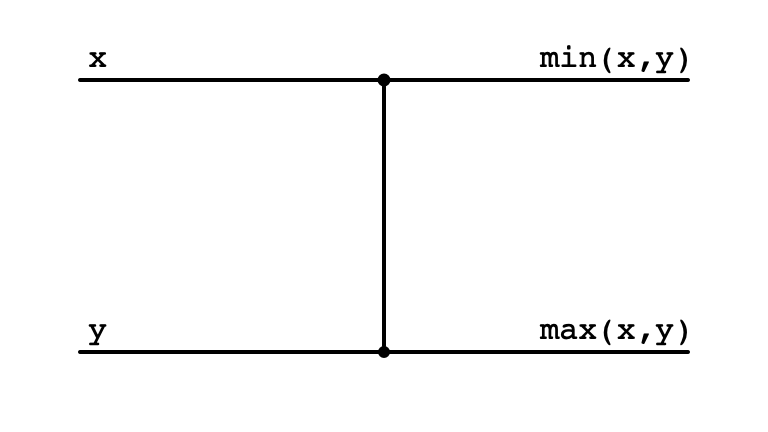
Comparator Swap
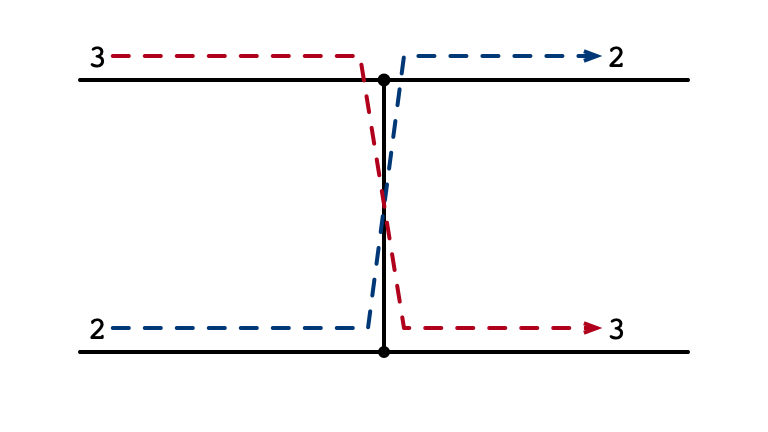
Comparator No Swap
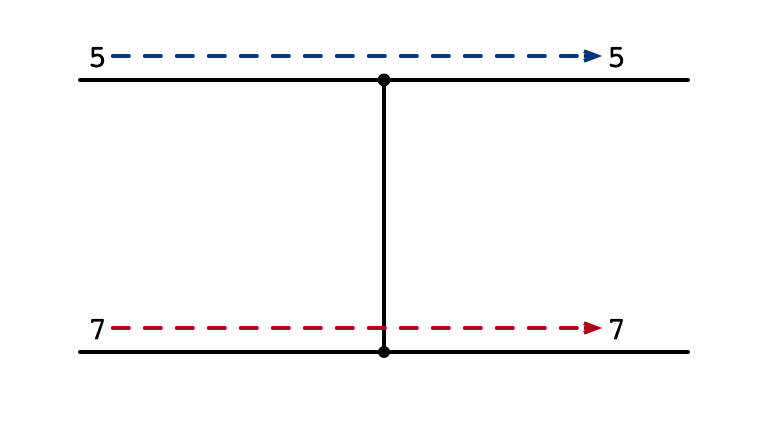
Sorting Array of Two Elements
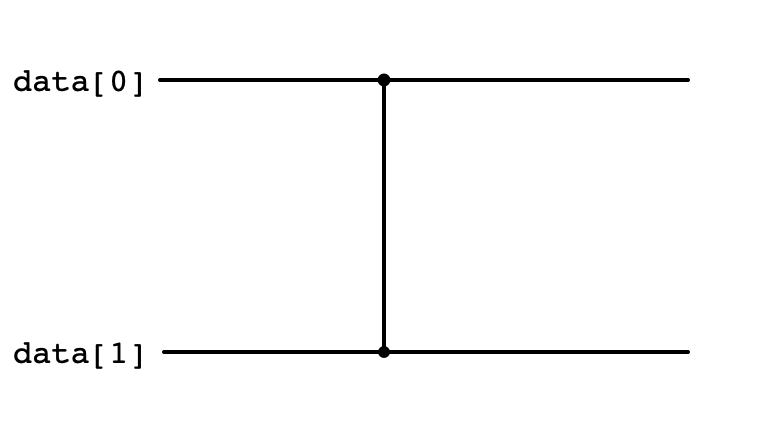
Insertion Sort
for (int i = 1; i < data.length; ++i) {
for (int j = i; j > 0; --j) {
if (data[j-1] > data[j]) {
swap(data, j-1, j)
}
}
}
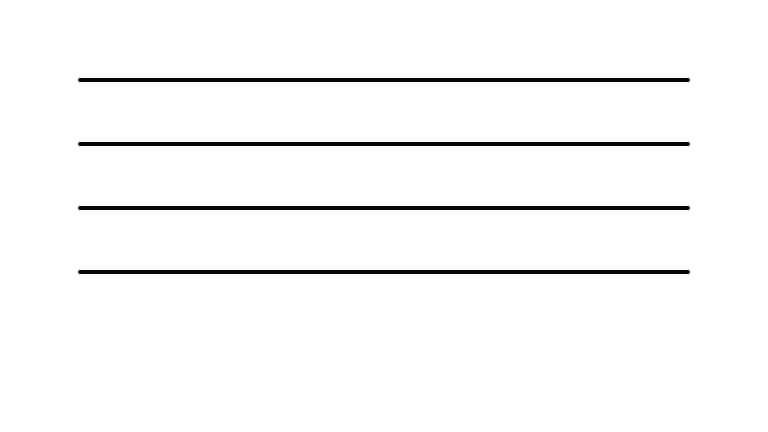
Insertion Sort: i = 1
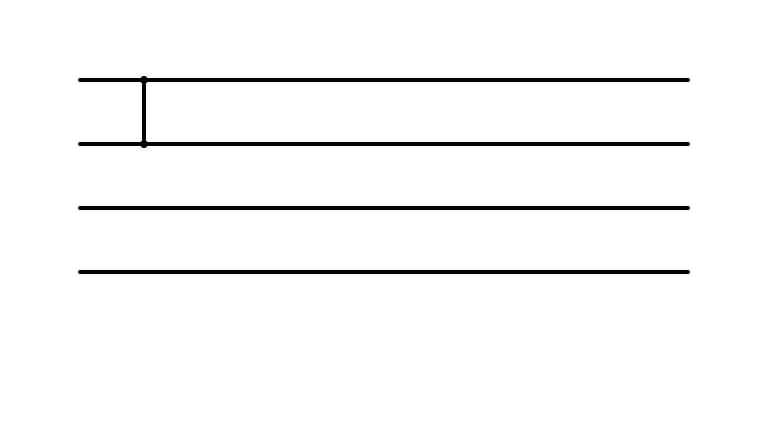
Insertion Sort: i = 2
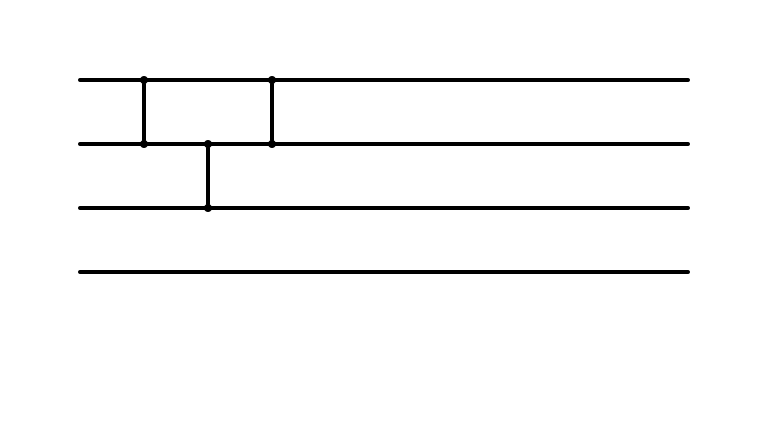
Insertion Sort: i = 3
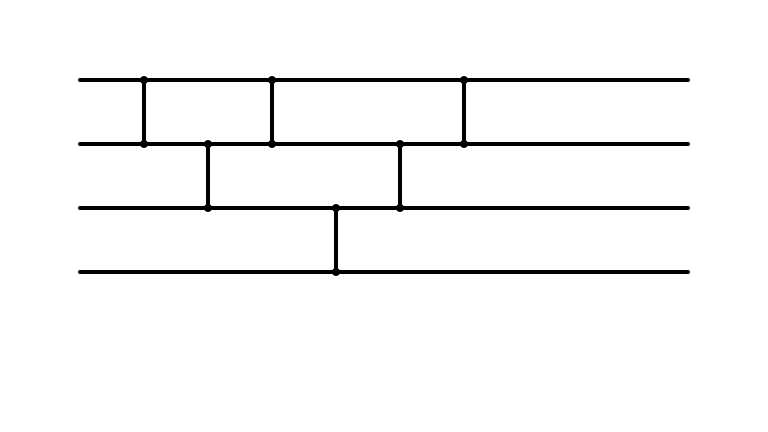
Which Operations can be Parallelized?

Parallelism
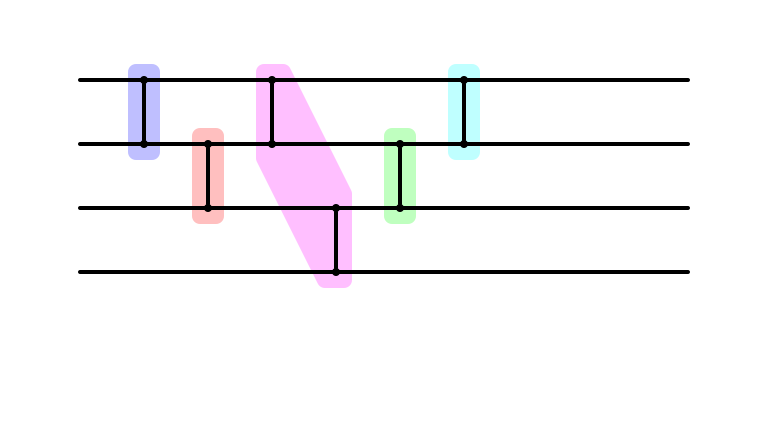
Cleaner Parallel Representation
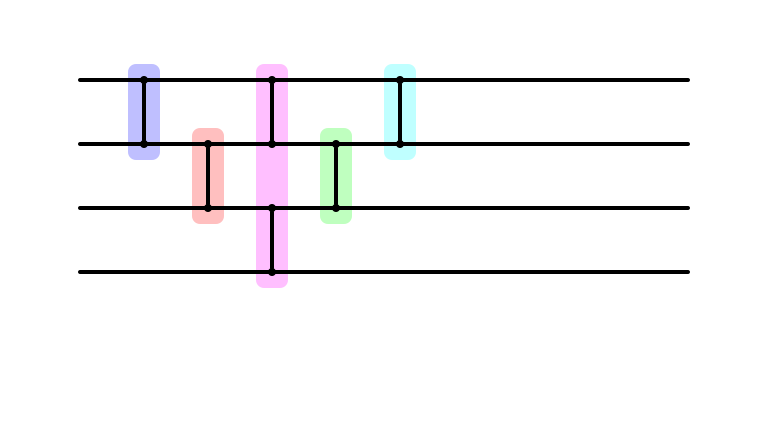
Depth
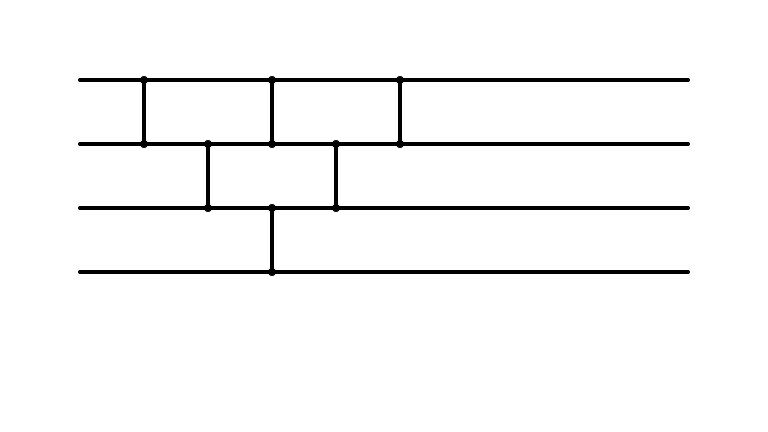
Insertion Sort: Larger Instance
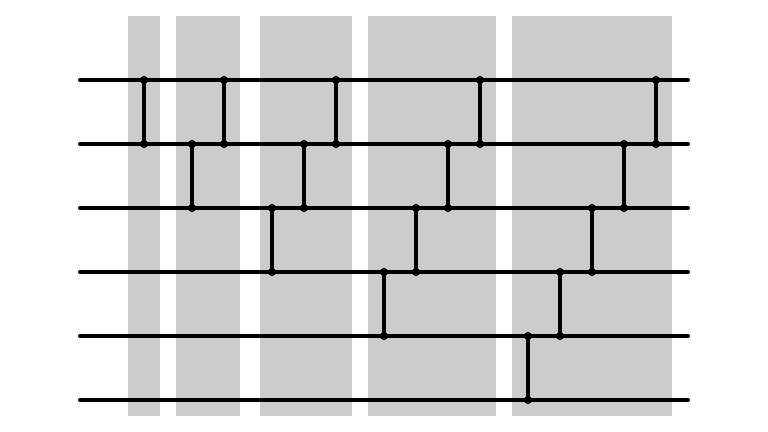
Done In Parallel?

Done In Parallel!
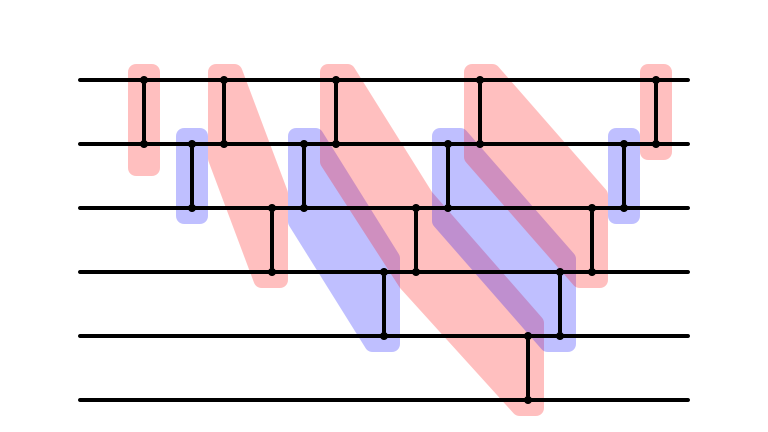
Cleaned Up
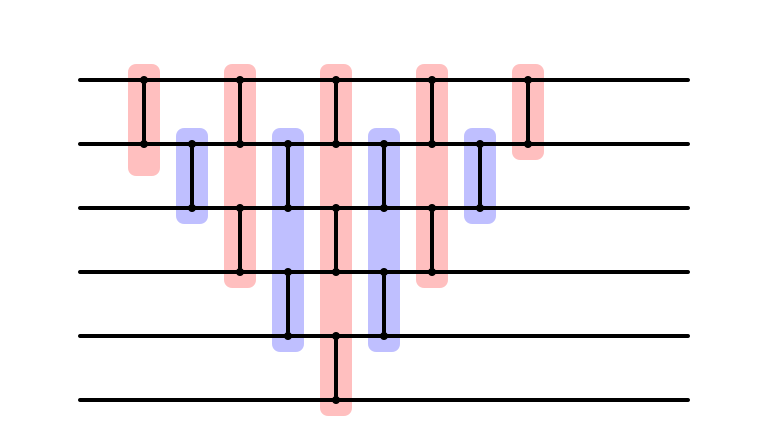
Parallel Depth?
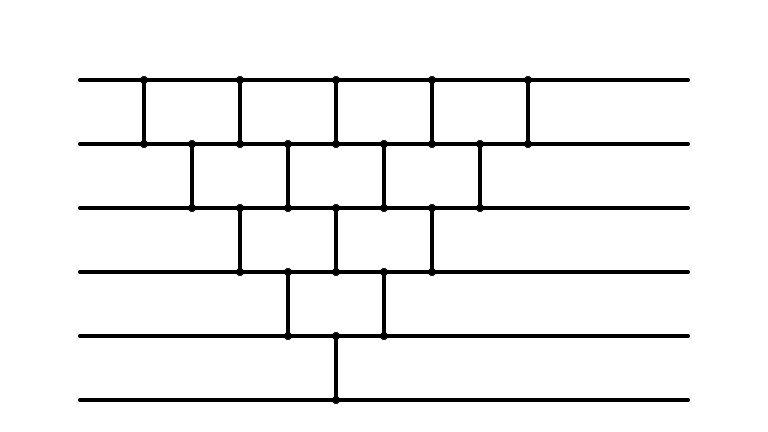
Bubble Sort
Consider:
for (int m = data.length - 1; m > 0; --m) {
for (int i = 0; i < m; ++i) {
if (data[i] > data[i+1]) {
swap(data, i, i+1)
}
}
}
Can we make a sorting network corresponding to bubble sort?
Bubble Sort: m = 6
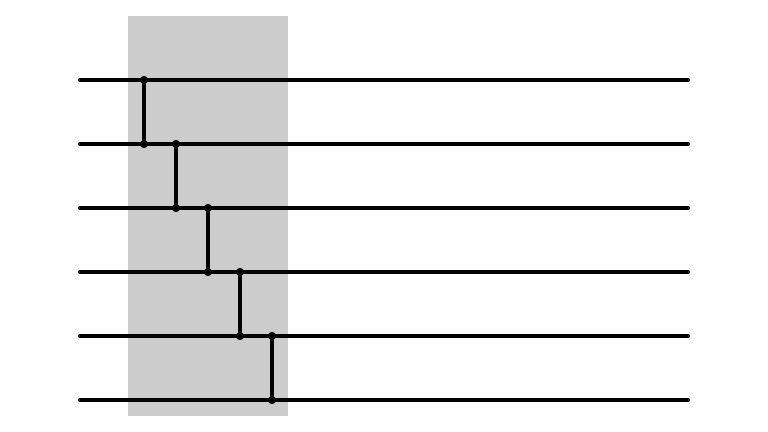
Bubble Sort: m = 5
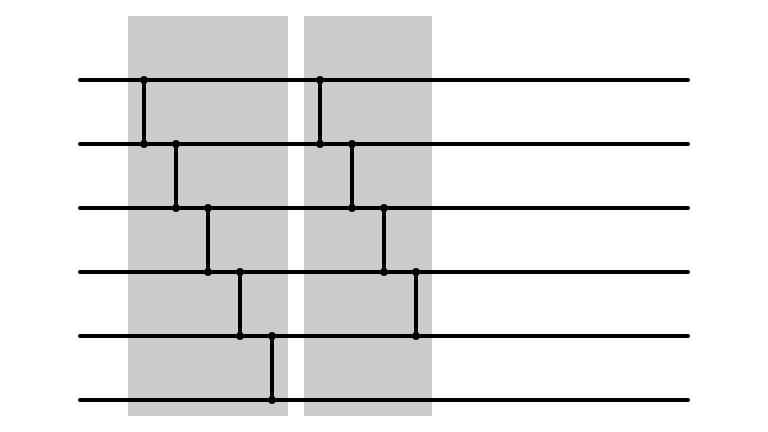
Bubble Sort: m = 4
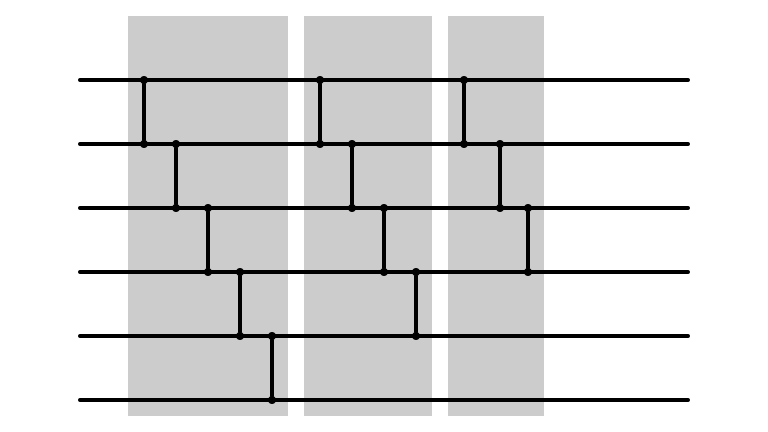
Bubble Sort: m = 3
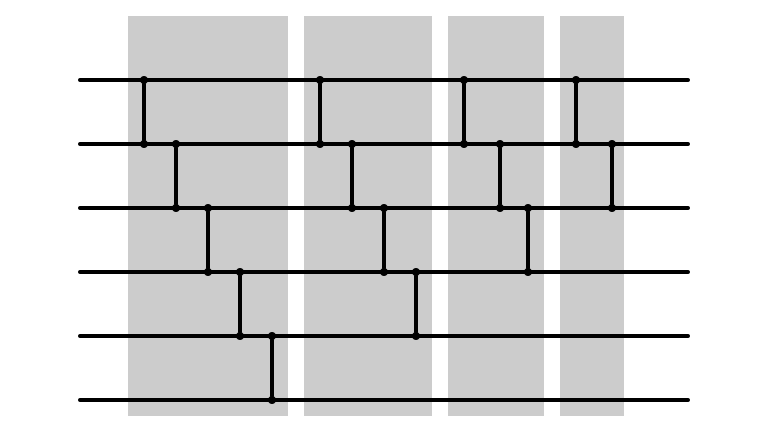
Bubble Sort: m = 2
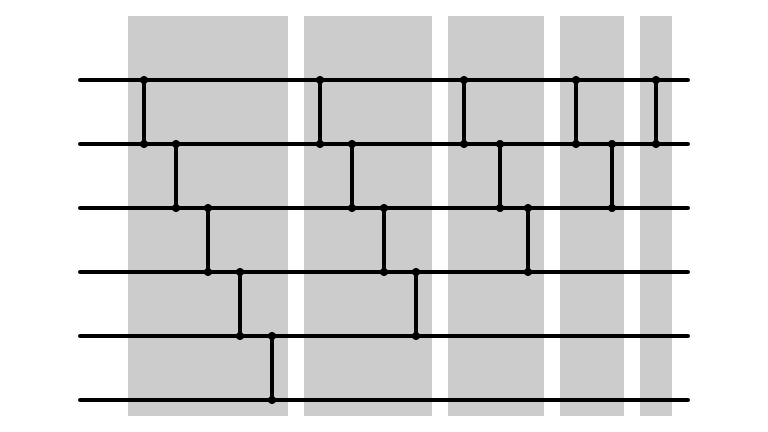
Bubble Sort Network
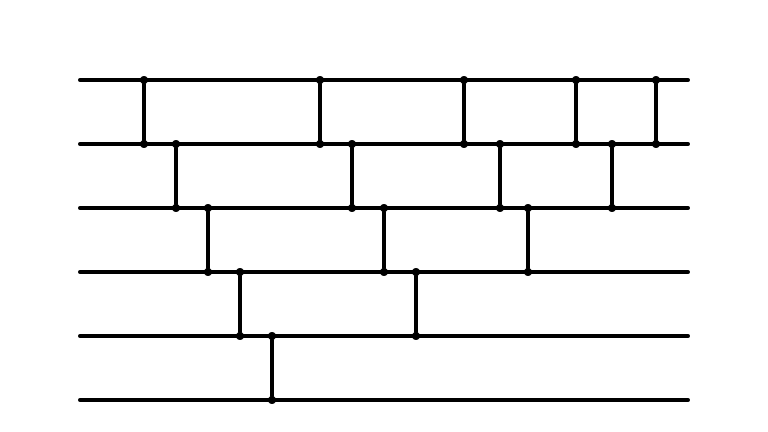
Bubble Sort Parallelized?

Does it Look Familiar?
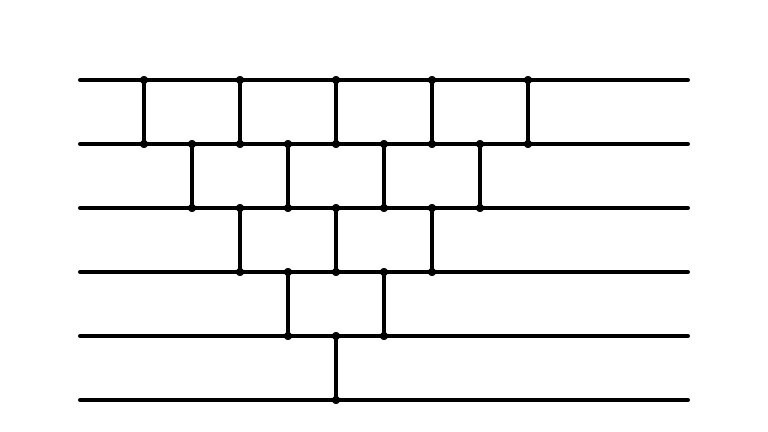
Huh
- Insertion sort and bubble sort perform precisely same operations
- only differ in the order in which comparisons are made
-
When fuly parallelized, both are same sorting network
- Parallel versions are reasonably efficient
- depth $2 (n - 1) - 1 = 2 n - 3$
Applications
- Sorting networks can be efficiently implemented in hardware
- can sort fixed number of items much faster than software sorting
- Depth corresponds to latency
- smaller depth = faster computations
Activity
Find a minimum depth sorting networks for small $n$!
Minimum Depth for $n = 4$?
Smaller Depth for $n = 6$?
Current State
What is known:
- Optimal depth sorting networks for $n \leq 17$
What is not known:
- Optimal depth sorting networks for $n \geq 18$